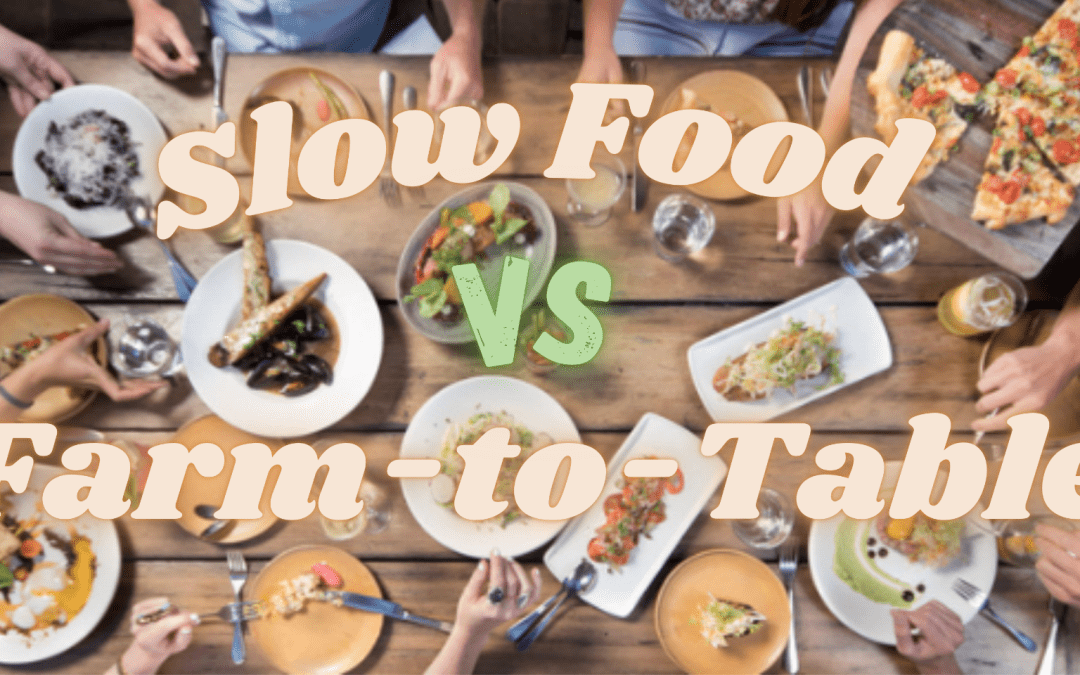What is the difference between Slow Food and Farm-to-Table?
It’s easy to get confused by the interchangeability of two terms like “slow food” and “farm-to-table”. While these terms are very similar and often times used interchangeably within the culinary world, they do in fact have some significant distinctions that are not only helpful to know but also pretty interesting. While you follow along on the PaceDocs journey this semester, we are going to be seeing the principles of these terms put into practice. So what the heck is the difference?
Slow Food is not only a movement it is a global, grassroots organization that was established in 1989 by Carlo Petrini and a group of activists. Their goal was to stop the extinction of local food cultures and traditions, tackle the emergence of fast life, and combat the decline of interest in the food we eat, where it comes from, and how our food choices affect the environment and our lives. Slow Food aims to follow three guiding principles in its work; good, clean, and fair.
- GOOD: quality, flavorsome and healthy food
- CLEAN: production that does not harm the environment
- FAIR: accessible prices for consumers and fair conditions and pay for producers
Around the globe, there are local chapters of members, many of them chefs, and restaurateurs, who are working to bring the Slow Food philosophy to life locally which in turn helps to change the global food system. Local chapters are called convivia and restaurants and chefs can apply to their local chapters to be evaluated and if accepted earn the “snail of approval”.

Seeing this seal of approval on a restaurant’s website, facade, or menu indicates that they have been recognized and accepted as practicing Slow Food values in their business.
The Slow Food organization has so much to offer globally and there are many ways to get involved as an individual and become a global citizen working towards food sustainability.
Learn more about the history and amazing work Slow Food is doing: slowfood.com
Also check out our local chapter in NYC: slowfoodnyc.org
Now, what about Farm-to-Table? 
Farm-to-Table sometimes referred to as farm-to-fork, is a social movement focused on fresh seasonal products sourced directly from local farms and brought to consumers by environmentally conscientious chefs and restaurateurs.
While Farm-to-Table doesn’t have a global organization behind it to verify, approve, and accredit members and practitioners it is in fact a movement that has been growing rapidly since its inception. The credit for that inception, in the United States at least, is given to Chef Alice Waters.
Chef Waters, after living and training in France, returned to the US to open Chez Panisse in 1971 in Berkeley, California. After experiencing France’s practice of using fresh local products straight from the growers she was determined to bring those same practices to America. She pioneered the farm-to-table movement and created a distinctive Californian cuisine by building a network of local bay area farmers and producers to supply her restaurant. Through her activism and educational programs, these practices have spread across the globe inspiring chefs, restaurateurs, and home cooks alike to buy local, organic, and eat seasonally.
Chef Waters has a fascinating and impactful story and it’s worth learning more about especially her educational programs such as the Edible Schoolyard. Fortunately, the Farm-to-Table movement has grown beyond Chez Panisse and California. You can find restaurants across the country touting “Farm-to-Table” practices. It is important to keep in mind that unfortunately when it comes to claiming to be farm-to-table there is no organization like Slow Food to verify whether or not the claims are true. That being said a lot of these restaurants list where their products come from and you can always ask about a restaurant’s local suppliers.
I’m sure you might still be asking yourself about the interchangeability of these two terms, and that’s okay. The reality is if a chef, restaurant, or even a home cook is mindfully practicing the principles of Slow Food they are in turn taking part in the farm-to-table movement and to a degree vice versus. While we all can’t be “snail approved” we all can collectively work towards the principles shared by both Slow Food and Farm-to-Table. Both movements are worthwhile with amazing benefits to not only our bodies but also the planet and they share important principles of sustainability, fair practices, and consuming locally and seasonally. Slow Food and Farm-to-Table are not the same however they share more in common than not, and hopefully, this information has provided a better understanding of those differences and similarities.
Stay tuned to PaceDocs and follow us on social media as we explore these practices even further, and we are doing it all For the Love of Food!

